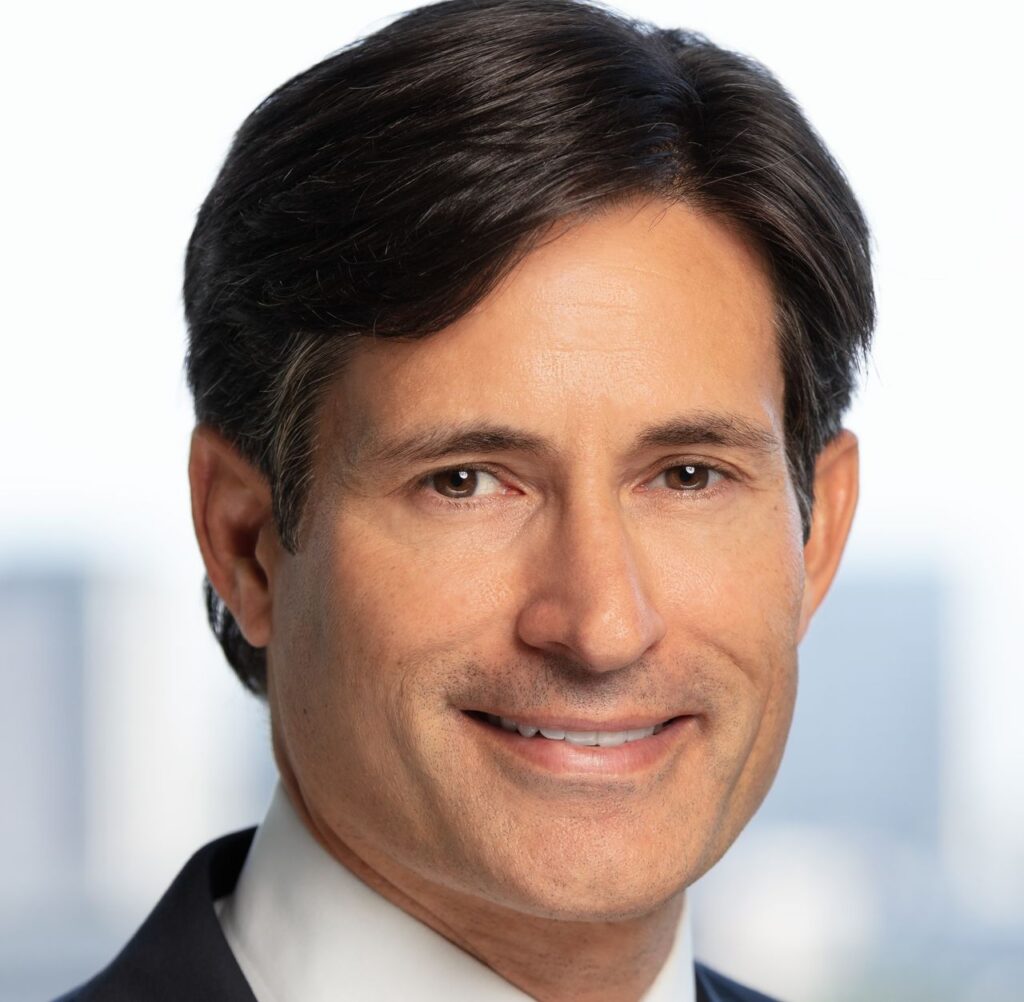Secondary Spotlight
‘GP-led Secondaries Should be Another Tool in the Toolkit’: Todd Miller on the 2024 Secondary Market Landscape
Revelation Partners caught up with Todd Miller, Global Co-Head of Private Capital Advisory at Jefferies, to discuss the 2024 fundraising and exit environment, the evolution of the GP-led secondary market, and considerations for GPs evaluating GP-led secondaries.

Secondary Spotlight is a new blog series where Revelation Partners interviews some of the leading secondary advisors in the industry. For the first iteration of the series, we sat down with Todd Miller, who is the Co-Head of Private Capital Advisory at Jefferies, where he leads a 60-person team. Jefferies is the largest independent, global, full-service investment banking firm. They offer deep sector expertise across a full range of products and services in investment banking, equities, fixed income, asset, and wealth management. Since 2001, they have advised institutional investors and general partners on over $160 billion of private equity secondary transaction value. The following interview was edited for length and clarity.
RP: 2023 was the second worst year for private equity distributions in over 20 years according to Andrea Auerbach, head of global private investments at Cambridge Associates. In our world of healthcare, we see the same thing. According to SVB, there were only 23 IPOs last year (19 of which were in biopharma). Meanwhile, according to Pitchbook, sponsor exits in healthcare have been in decline since 2021. What are fund managers’ expectations for the exit environment in 2024?
TM: Yes, we see the same thing regarding distributions. At Jefferies, we have 30 Managing Directors covering 800 GPs globally, so we have a really good pulse on GP expectations.
GPs are sitting on quite a bit of dry powder, and their job is to do deals and put capital to work. It has been a slow environment to deploy capital as well, but we’re starting to see GPs want to start trying to do deals. On the flip side, we’re not seeing a lot of exits. In some cases, we are starting to see that the exit environment is not necessarily at the current mark. GPs are holding things at full valuations, if not valuations above the current mark. We are not seeing a lot of distributions.

LPs are now starting to come to the realization that 2024 is not going to be a fantastic exit environment or a big distribution year, which is leading to a lot of secondary volume. We’re getting calls from LPs and GPs saying, ‘I need to generate some DPI.’
Todd Miller of Jefferies PHOTO: JEFFERIES FINANCIAL GROUP
We see this across all asset classes including venture and growth equity. Big funds, small funds, and medium-sized funds. Everyone is trying to figure out how to generate some DPI. GP-led secondaries are a fantastic way for a GP to recapitalize a business they really like, want to continue to own, and want some additional capital in. For buyers though, the bar is very high. There is no lack of opportunities for secondary investors to deploy capital.
RP: There are over 120 new healthcare investment firms that were started in the last 5 years – across both VC and PE. These firms have collectively raised over $60 billion. If you look at the DPI for many of these funds, however, it’s close to 0. Meanwhile, they’re going out to fundraise in the most challenging environment in years. What advice do you offer emerging fund managers facing this challenging environment?
TM: We tell them to explore a GP-led secondary. We see a lot of emerging fund managers with 0 DPI which is why the GP-led business is frankly so busy. Every GP is hearing from their LPs that they need liquidity. And they specifically need it if the GP wants the LP to re-up to the next fund.
You just cannot come back to your LP base and ask to raise a new fund when DPI is at or near 0.
Right now, every LP is stretched thin in terms of their ability to commit. It is very hard to take a company public now and it doesn’t feel like the public markets are fully opening up any time soon. Our advice to those managers is to try to find some things that are winners in your portfolio. It’s not just the multi-billion-dollar funds. We work with a lot of managers who are $300-400MM funds. All of them are looking to generate DPI ahead of a fundraise.
RP: At Revelation Partners, we are healthcare specialists. In almost every regard, healthcare lags behind other sectors. So, it’s not surprising to see that healthcare is lagging other sectors in its evolution of secondary transactions. We are, however, starting to see single-asset continuation funds around healthcare assets and multi-asset continuation funds for healthcare-dedicated funds. Are you seeing this as well? What is the universe of secondary funds participating in these healthcare-dedicated continuation funds?
TM: I wouldn’t say we are particularly seeing healthcare continuation funds more or less relative to other sectors. We see about 10% of GP-led secondaries as being healthcare-related. Some of the deals we’ve worked on have been with the bigger firms that have a healthcare angle and are looking to put together a diversified portfolio. We’ve done deals with TPG and Blackstone Strategic Partners. They have some healthcare expertise in-house, but we don’t see many healthcare specialists.
RP: Similar to the evolution of private equity and venture capital firms towards industry specialization, we expect the secondary world will gravitate to specialized strategies. Are you seeing secondary firms developing sector expertise? Any in healthcare?
TM: I’ve been doing secondaries for 20 years. When I first got into it, it was nothing but LP interests and everyone was a generalist. As the market has grown, you’re certainly seeing specialists. There used to be no such thing as a real assets secondary fund; now there are several of those. There’s a timber secondary fund, there are credit secondary funds. For us to grow from $120B secondary volume to $250B to $500B, specialization will absolutely come, and I think it will happen fairly quickly.
At Jefferies, we are starting to specialize. Not just between GP and LP secondaries, but we have people who focus on energy, real estate, and middle market versus growth equity. Specialization is just part of the natural evolution and growth of the secondary market.
RP: How are you seeing the generalist secondary firms navigate the regulatory / reimbursement landscape of these healthcare deals?
TM: They are bringing in other experts in-house. They have good outside advisors, consultants, and lawyers. They seem to be navigating it.
I don’t think healthcare is as tough as some of the other things that we’ve seen including real assets like energy where you need to have very technical expertise. But healthcare definitely requires a different level of expertise.

RP: Historically, continuation funds have focused on large-cap private equity firms (e.g. TPG, Blackstone, Hellman & Friedman, Warburg Pincus). We are, however, starting to see middle-market private equity firms increasingly explore continuation funds. Are you seeing the shift of continuation funds down market?
TM: We’ve seen it with TPG, Blackstone, and H&F at the larger end. But we’re also seeing it at the smaller end. And it’s coming from both the GPs and the secondary buyers. Even the ones who said they would never look into this space or it’s not LP-friendly enough, they’re all looking at GP-led secondaries.
RP: We’re generally seeing discounts at 30-35% for secondary transactions including continuation funds. Is that what you’re seeing?
TM: When you talk about growth equity or venture or biotech at a 30% discount, that’s hard for anyone to stomach – whether it’s a GP trying to do a transaction or an LP looking to take liquidity.
If the GP was going to exit that company today, it’s going to be a challenge to exit at the current mark. A lot of this is stuff still sitting at old valuations or old marks. And buyers are asking for a pretty healthy discount in anything venture or growth-related unless the GP proactively marked something down. But you don’t see a whole lot of that.
We are generally seeing 30-35% discounts for the venture growth space. We’re starting to see better pricing than that so maybe 25% discounts.
I get asked all the time, should we just wait to do a transaction when the price will be better? The problem is the equilibrium is off. If pricing comes up to 15-20% discounts, there will be a flood of supply on the market that will prohibit the pricing from coming up to the 15-20% mark. There is so much potential supply relative to the amount of capital available for the opportunity.
Unless there is a broad change in the markets, like the Fed lowers interest rates by 300-400 bps, I don’t think we will see discounts in the growth equity venture space narrow significantly for some time.
On the more traditional LP Secondary private equity side, things were getting done at par but now everyone wants some kind of discount regardless of the valuation. Secondary funds need to tell their LPs they are getting a discount. GPs are doing GP-led transactions with their best assets, and they recognize it’s hard to get a transaction done and pass your LPs if you price at a double-digit discount. LPs are smart enough to know they can sell a buyout fund at 90% NAV so why would I sell into this CV at a 15-20% discount?
VC and growth equity fund managers are starting to get more sophisticated, but they are behind their buyout counterparts. The buyout market has been very active for secondaries for some time. VC and growth equity fund managers are coming up to speed. If we were to speak this time next year, they would be a lot more educated because of the lack of distributions and the difficult fundraising environment. We are already in the market now with several VC continuation funds and will continue to be active in the space.

There is not enough capital today for all the opportunities that are possibly out there.
If every buyer doubled their fund size overnight, we’d have a much more active market. I’d love to say the market will grow 50% this year. It’s not, but it could if the capital was available. I don’t think there is enough capital today.
RP: What do you recommend for fund managers looking to learn more about secondary solutions?
TM: Education is critical. You roll back to 12-18 months ago, I couldn’t say this. But today, pretty much every GP will take a call with us to understand this market, understand what’s going on, and to listen to the market landscape and market terms. That’s vastly different than 12-18 months ago. Our recommendation is to understand this market and understand it’s another tool to include in your toolkit. It may not be the right tool for everyone, but it’s another path of liquidity.
